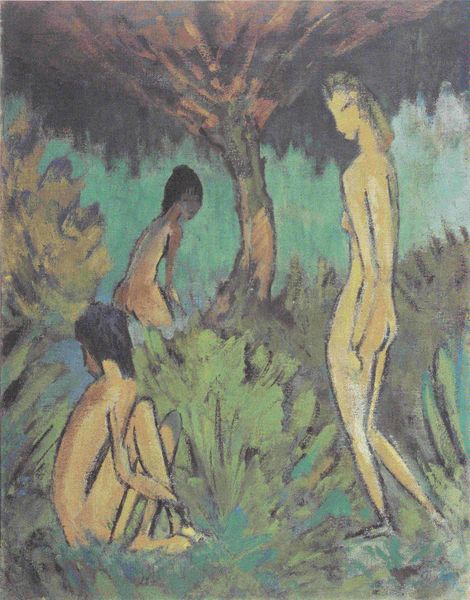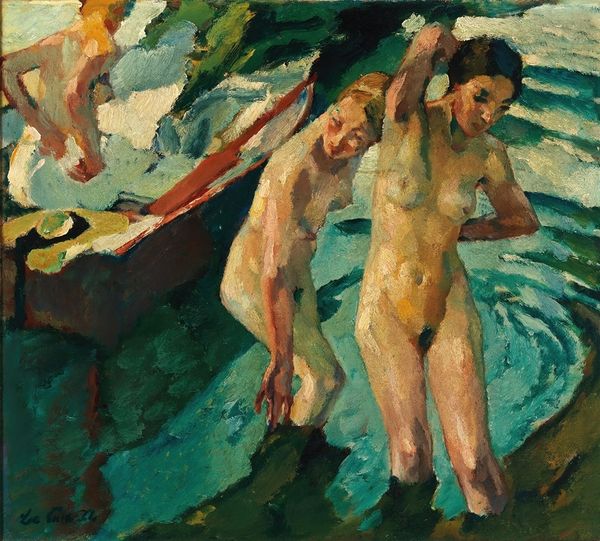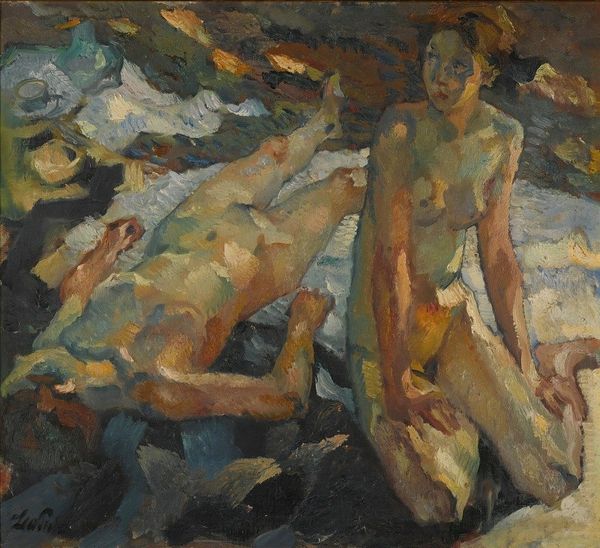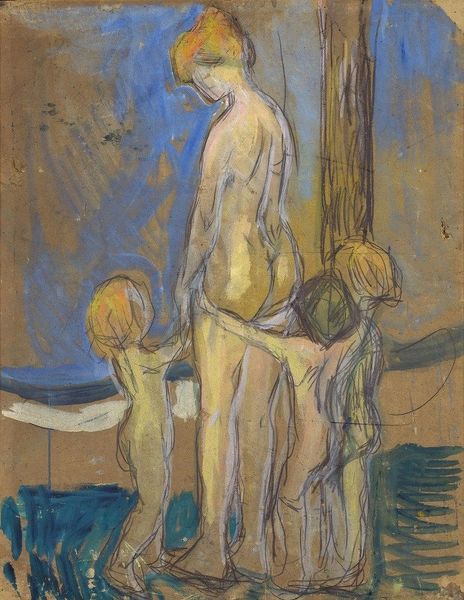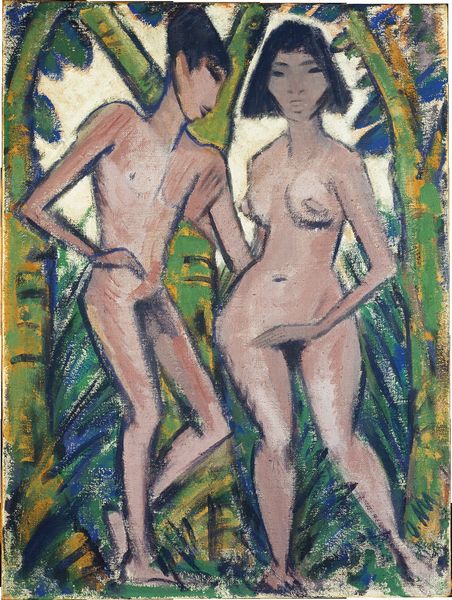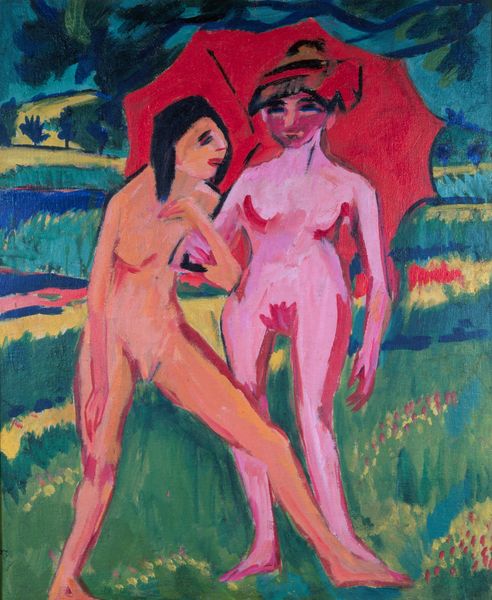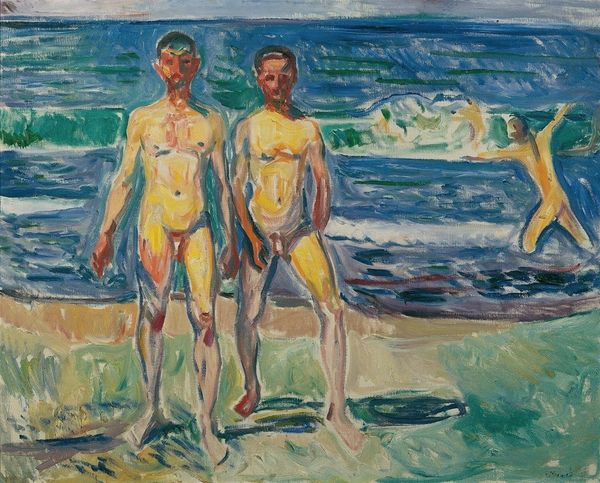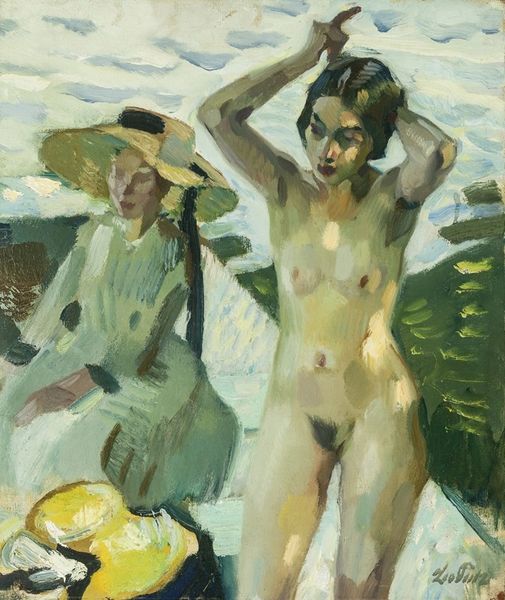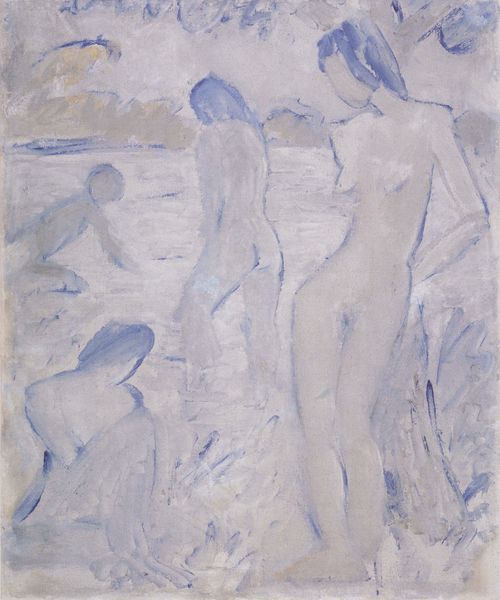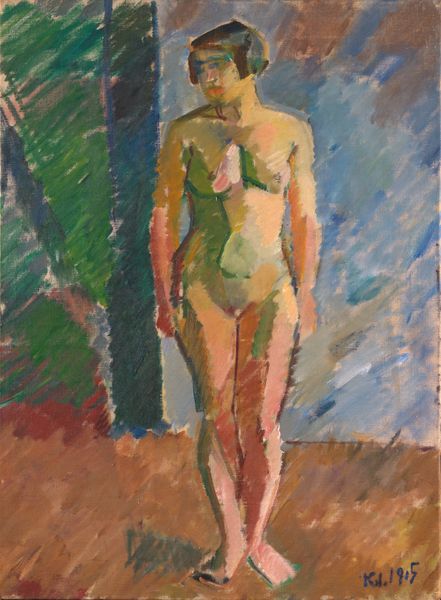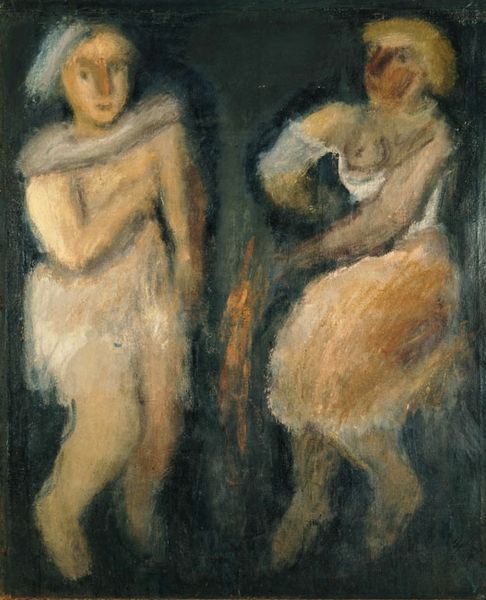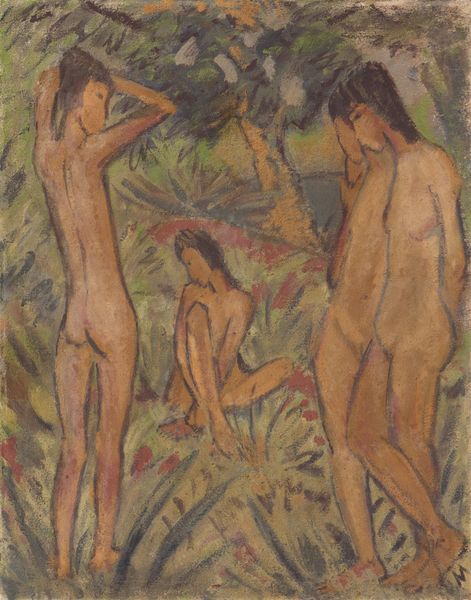
oil-paint
#
portrait
#
oil-paint
#
figuration
#
oil painting
#
bay-area-figurative-movement
#
group-portraits
#
nude
#
modernism
Copyright: David Park,Fair Use
Curator: David Park’s "Two Women," dating from 1957 and rendered in oil on canvas, offers a study in figuration that both resonates and diverges from mainstream modernism. What catches your eye first? Editor: The sheer physicality. It’s almost brutal in its directness. The thick, visible brushstrokes give these figures a palpable presence, a weight. There's nothing ethereal here, just… bodies. They remind me of awkward vacation snapshots, really. Curator: Right, and that’s crucial. The application of the paint – the materiality itself – it's far from invisible. We see the labor involved, the act of construction. This thick paint acts almost sculpturally, defining form in a very deliberate way. And considering the period, 1957, this emphasis pulls against the flattening tendencies we see in abstract expressionism dominating the market at the time. Editor: Yes, definitely. It’s so in your face, it almost feels like it needs to be touched! It's kind of raw in ways abstract expressionism was avoiding. The Bay Area Figurative Movement, in its challenge to the hegemony of abstraction, seems, looking at this painting, such an unavoidable rebellion. Curator: Exactly. They were deliberately re-introducing the figure, questioning what constitutes high art. The focus is clearly on the act of representing something very human. Look closely – see how Park models these figures almost with pure color, patches of raw pigment directly applied? Editor: And yet, they feel a world away from academic painting or anything striving for idealized form. Maybe that's the key to understanding the cultural relevance: this refusal to flatter. It’s more about capturing a mood or a presence, wouldn't you say? It seems…almost daring. Curator: Precisely. Park is not just showing us figures, he's showing us how painting itself is a form of labor, a form of decision-making and selection. It reminds us that artistic representation has an ideological grounding – who gets depicted and how? All those loaded choices contribute to an artistic object. Editor: True, it gets me pondering how those specific aesthetic choices resonate to the sociopolitical environment. After examining all of those creative choices, one understands more thoroughly how artists engage with not only aesthetic problems, but engage within society. What a statement piece. Curator: It’s undeniably compelling when you see those artistic decisions as statements reflecting the zeitgeist! A challenging but worthy journey of artistic consideration!
Comments
No comments
Be the first to comment and join the conversation on the ultimate creative platform.
